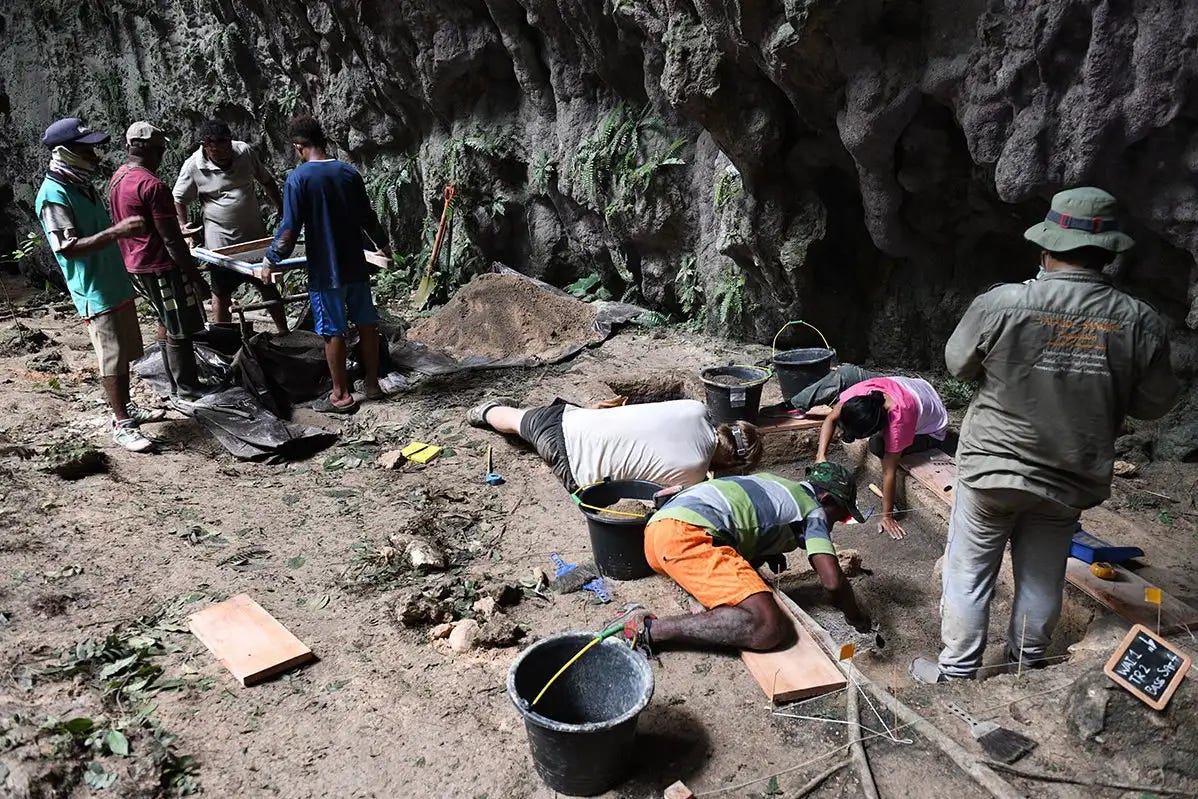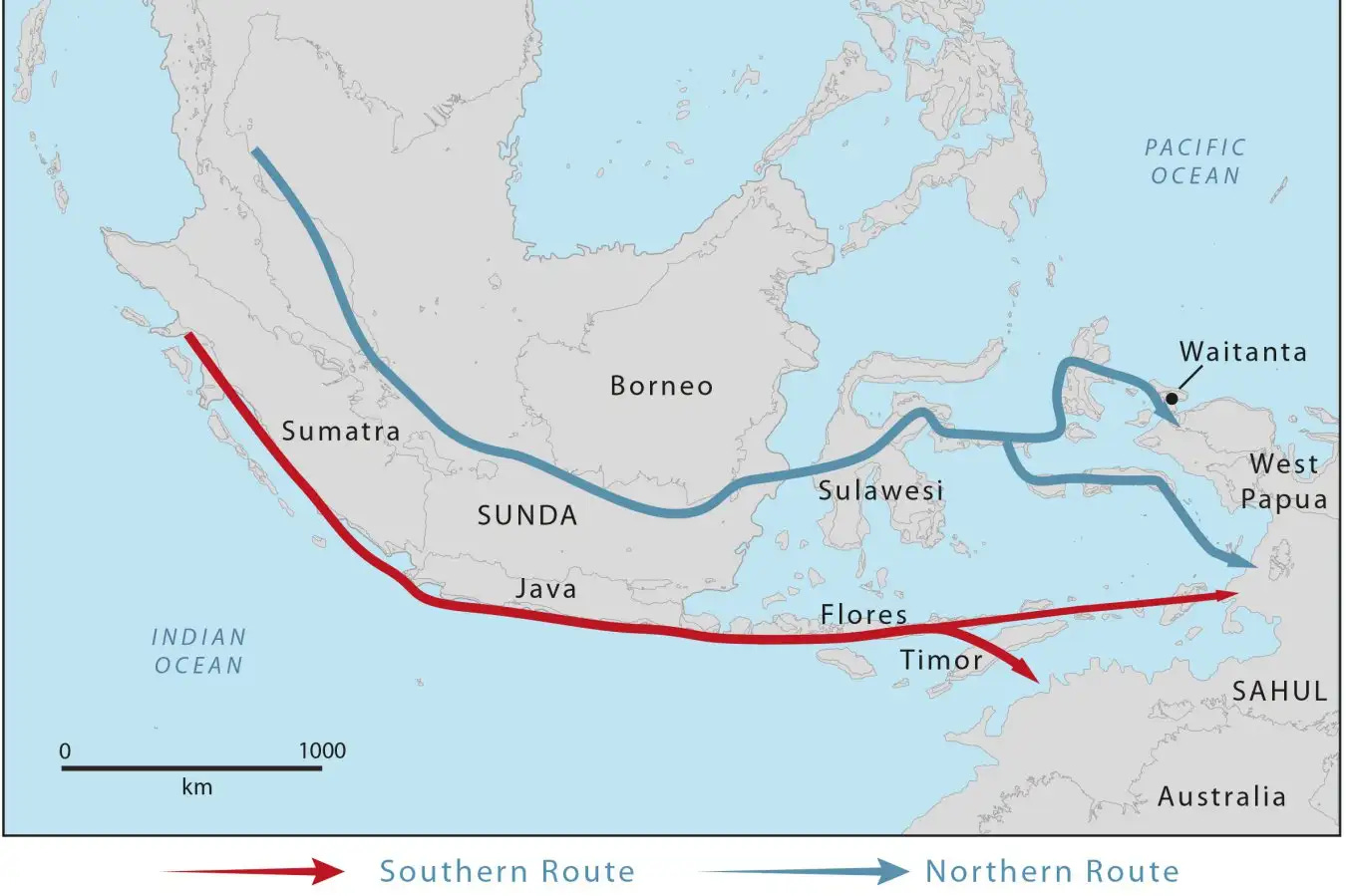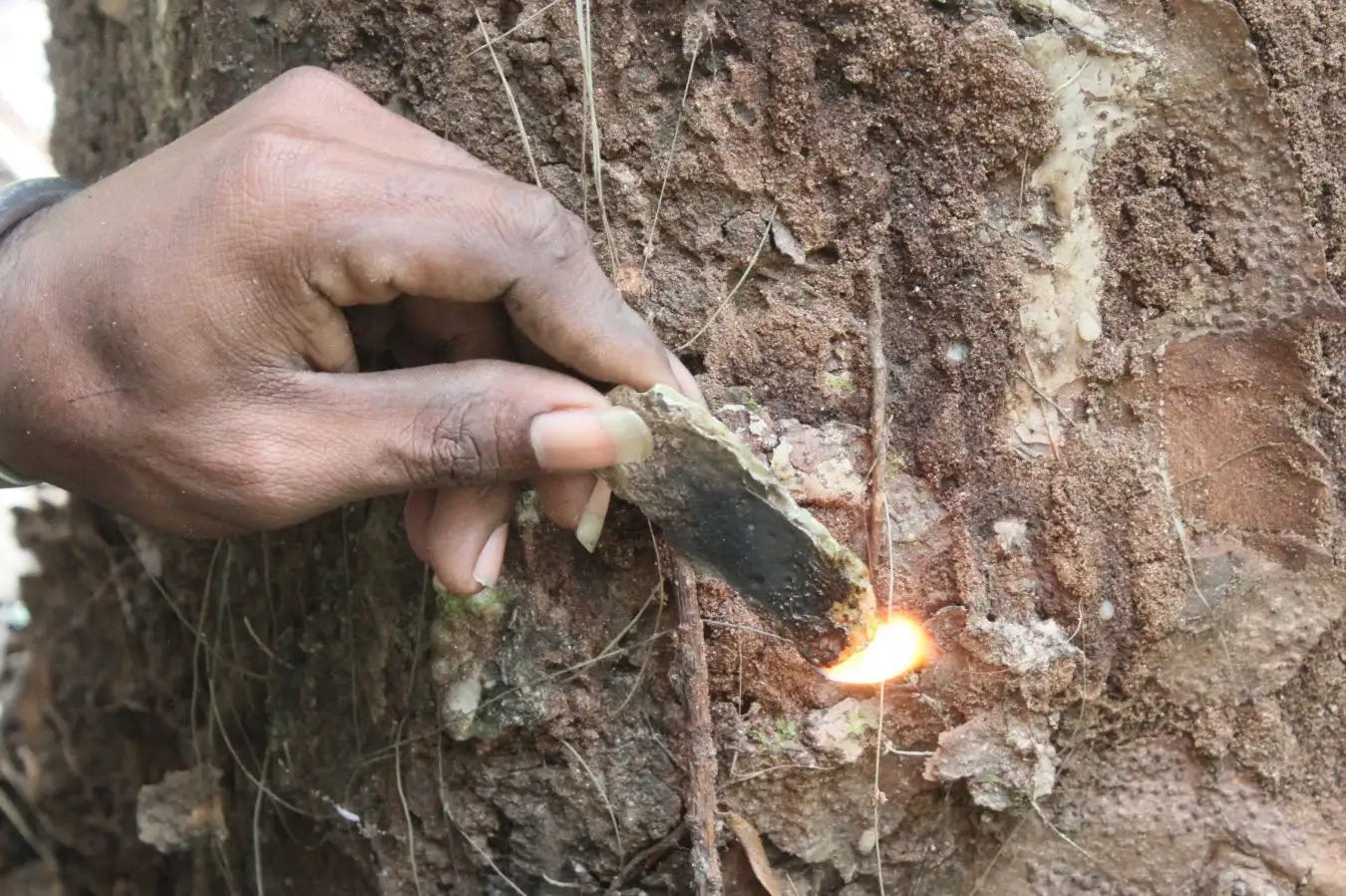Humanity's Epic Journey to Australia Through an Ancient Resin Artifact
Manage episode 434942077 series 3444207
Archaeologists have long debated the exact paths taken by early modern humans on their journey to Australia. While genetic data has estimated the arrival of Homo sapiens in Australia to be under 50,000 years ago, archaeological findings suggest an earlier presence, possibly as far back as 65,000 or even 80,000 years ago. An exciting new discovery1 from eastern Indonesia, a tiny piece of plant resin, has pushed the timeline back and revealed critical insights into the route early humans might have taken.
The Human Journey to Australia: Two Possible Routes
For decades, scientists have pondered how modern humans traversed Southeast Asia to reach Australia. During the last glacial period, sea levels were significantly lower than today, with vast landmasses connecting now-separated islands and continents. In the west, Borneo, Sumatra, and Java formed part of mainland Asia, while New Guinea was linked to Australia, creating a more connected landscape.
This geographical configuration allowed for two potential migration routes into Australia. The northern route, which involved traveling eastward from Borneo to Sulawesi, eventually leading to New Guinea, and then southward into Australia, has long been a subject of intrigue. The southern route, alternatively, required a path via Java, Bali, and Timor before reaching the northern Australian coast.
Until recently, most archaeological efforts concentrated on the southern route. However, a new wave of research, spearheaded by experts like Dylan Gaffney from the University of Oxford, is beginning to shed light on the previously understudied northern route.
A Breakthrough Discovery: Resin Reveals the Northern Route
In an effort to uncover evidence for early human migration, Gaffney and his team turned their attention to Mololo Cave, situated on Waigeo, an island in the Raja Ampat archipelago just west of New Guinea. This location sits squarely on the northern route and presents an ideal site for investigating early human occupation in the region.
Excavations at Mololo Cave revealed an extraordinary find—a small, angular piece of plant resin, only 1.4 centimeters across. This ancient fragment, which shows signs of having been cut from a tree rather than naturally occurring, was found alongside other evidence of human activity such as charcoal and stone flakes. Radiocarbon dating of the resin confirmed that it was at least 55,000 years old, making it one of the earliest known indicators of human presence on the northern route.
While the exact purpose of the resin is uncertain, Gaffney suggests it was likely used as a fuel source for fires, providing light in the dark caves. Gaffney explained,
"It is very flammable and is a good light source in caves."
Other possibilities include its use as an adhesive or fragrance, but regardless of its function, the discovery demonstrates that humans inhabited Waigeo as early as 55,000 years ago. Gaffney noted,
"We are demonstrating that people used the northern route."
Evidence Mounts for the Northern Route
The discovery of the resin further supports the theory that the northern route was a viable pathway for early humans migrating to Australia. Kasih Norman, an archaeologist at Griffith University in Queensland, Australia, emphasizes that geographical models have long suggested the northern route as the more plausible path due to easier sea crossings. Norman said,
"You have more water crossings between islands to do along the northern route, but the crossings themselves are shorter."
Importantly, the islands were often visible to one another, providing a visual guide for travelers.
Despite these favorable conditions, archaeological focus historically concentrated on the southern route. Only recently have efforts been made to explore sites along the northern pathway. One such key discovery came from Sulawesi, where researchers uncovered a 50,000-year-old cave painting of a pig, providing further evidence of human presence in the region along the northern route.
On the other hand, evidence for human habitation along the southern route remains sparse. A study published in May 2023 found no signs of human activity on the island of Timor before 44,000 years ago, casting doubt on the significance of the southern route during earlier periods of migration.
The Missing Denisovans and an Ongoing Mystery
The findings from Mololo Cave contribute to a broader understanding of early human migration but also raise intriguing questions about the role of other hominin species in Southeast Asia and Australia. Populations in the region, particularly in Papua New Guinea, carry genetic traces of Denisovans—an extinct group of archaic humans. These populations exhibit DNA from two distinct Denisovan groups, suggesting that these ancient humans once inhabited Southeast Asia.
However, no Denisovan remains have been found in Australia, and no evidence points to their presence on the continent. As Norman explained,
"As far as we’re aware, there’s never been anyone else [but Homo sapiens] here."
This absence of Denisovan fossils in Australia remains an unsolved puzzle, despite their apparent genetic legacy in surrounding areas.
Future Research and the Journey Ahead
While the precise details of how and why the resin arrived on Waigeo remain uncertain, this discovery opens the door to new lines of inquiry about human migration patterns and the capabilities of early Homo sapiens. The study not only deepens our understanding of the northern migration route but also highlights the need for continued exploration in the region.
As researchers continue to investigate early human sites along both the northern and southern routes, more discoveries are anticipated. Future work could help explain the nature of ancient marine trading networks, societal organization, and the movement of both people and materials during the late Pleistocene.
The ancient resin fragment from Mololo Cave serves as a testament to the ingenuity and adaptability of early humans. It offers a glimpse into a time when Homo sapiens, driven by curiosity, survival, and perhaps even spiritual significance, embarked on epic journeys across vast and unfamiliar landscapes. In doing so, they laid the groundwork for the complex societies that would follow, and their legacy continues to shape our understanding of the deep past.
Conclusion
The discovery of ancient plant resin on Waigeo Island adds a compelling piece to the puzzle of early human migration into Australia. By revealing that humans likely traversed the northern route 55,000 years ago, this small artifact challenges previous assumptions and emphasizes the importance of continued research in understanding human evolution, movement, and societal development.
Through their resilience and innovation, early humans achieved remarkable feats, crossing treacherous waters and navigating untamed landscapes. The resin from Mololo Cave stands as a symbol of humanity’s enduring quest to explore and survive in the world around them, even in the most distant and challenging corners of the Earth.
Gaffney, D., Tanudirjo, D. A., Djami, E. N. I., Mas’ud, Z., Macap, A. R., Russell, T., Dailom, M., Ray, Y., Higham, T., Bradshaw, F., Petchey, F., Florin, S. A., Roberts, P., Lucas, M., Tromp, M., Greig, K., Xhauflair, H., Montenegro, A., Hall, R., … Haberle, S. (2024). Human dispersal and plant processing in the Pacific 55 000–50 000 years ago. Antiquity, 1–20. https://doi.org/10.15184/aqy.2024.83
7 episoder







